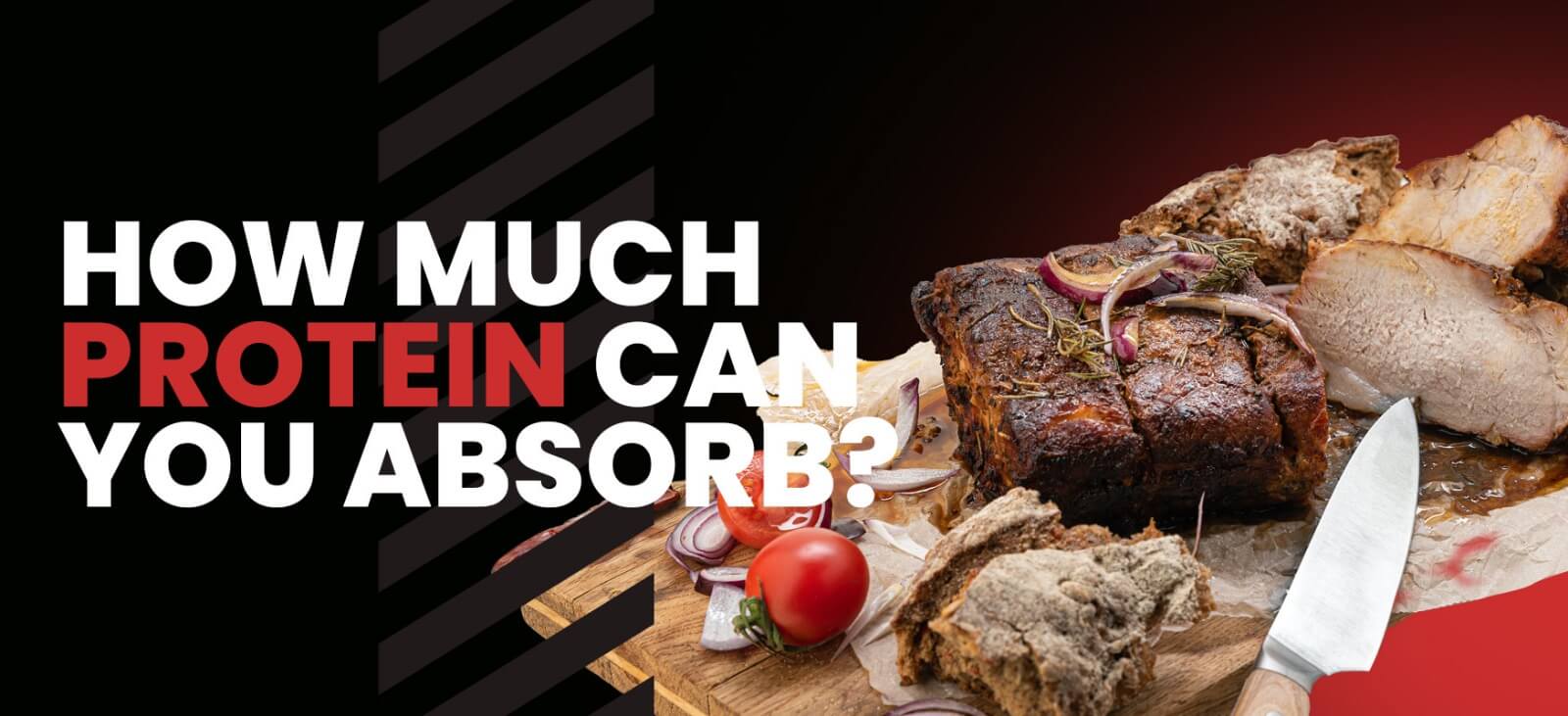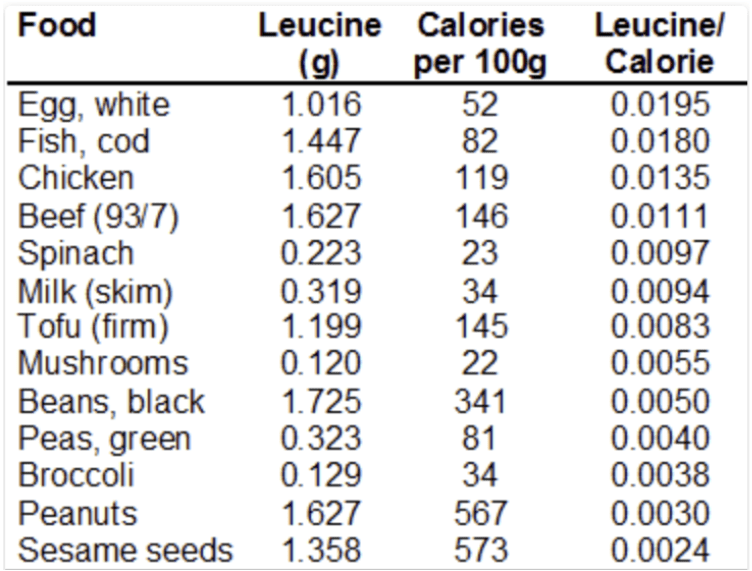How much protein can you absorb?

How much protein can you really absorb and how can you maximise muscle growth? Find out the answer from our Head of Nutrition, Sheridan Skye.
We seem to see a number of dogmas in the fitness industry that are coined by people who confuse correlation with causation. Correlation is not the same as causation – sometimes two things can share a relationship without one causing the other.
One of these famous beliefs is that you can only absorb 30g of protein in one meal.
I’m sure you have heard of it! (spoiler alert – not true). So, let’s break it down – why is this dogma not true?
First, let’s understand a few key terms:
Digestion: The breakdown of large insoluble food (protein) molecules into small water-soluble (amino acids) food molecules so that they can be absorbed into the watery blood plasma.
Absorption: The passage of nutrients from the gut into your bloodstream.
Metabolism: The process by which your body converts what you eat and drink into energy.
When protein is digested it is broken down into individual amino acids which are individually used for a multitude of important physiological functions in the body. These amino acids are then transported to your gut to be absorbed and then sent to the liver to be metabolised. The amino acids that aren’t directly used by the liver enter the bloodstream after which almost all of the amino acids are used by the body. Any excess amino acids that aren’t used are converted to urea and passed when you pee.
Here’s the thing: the amount of protein that can be absorbed is virtually unlimited. Yes – unlimited.
Why? Because absorption is not the same as digestion and metabolism!
So, we virtually absorb ALL of the protein we eat!
However, there is a ceiling of protein that can be used for muscle protein synthesis which is where this long-held misperception comes from. Plus, let’s be honest, that’s really what people are wondering when they ask how much protein we can absorb.
Muscle protein synthesis is the major determinant of muscle growth and is regulated by the mTOR pathway. This pathway is potently activated by resistance training and amino acids, leucine in particular.
What is mTOR and why does it matter?
mTOR is the major regulator of growth in humans and controls most anabolic and catabolic processes in response to feeding.
Anabolic = To grow
Catabolic = To breakdown
When we are building muscle we want to be anabolic and mTOR activation is vital for skeletal muscle hypertrophy. Leucine is particularly important because it signals that there is enough protein available to synthesize new skeletal muscle and mTOR is highly sensitive to the amount of leucine available in the bloodstream. That’s not to say that other amino acids aren’t important, but leucine seems to be the main trigger for hypertrophy.
There is a general recommendation that MPS is optimised with an intake of 20–25 g of a high-quality protein, consistent with the “muscle full” effect.
What is the muscle full effect?
Without getting too technical and turning this into a biochemistry lesson, the muscle full effect basically means that the anabolic response to feeding lasts only for a short period of time, even if there are amino acids available.
The problem with this theory is that not all protein sources are created equal, even protein sources that some would consider ‘high quality.’ Some foods (particularly vegetarian sources) are low in the amino acid leucine. On the other hand, foods that are high in leucine include: beef, whey protein, chicken, turkey and fish. The table below breaks this down further:

Research suggests that 2.5-3.5g of leucine in each feeding is optimal for muscle hypertrophy. Practically, 2.5-3.5g of leucine might look like:
- 3 eggs
- 20g whey protein
- 120g beef
- 400g of tofu (note: the required volume of vegetarian foods are much higher than animal based protein to meet the same amount of leucine)
What does the muscle full effect tell us?
Well a few things: the first being that consuming all of our protein in one meal isn’t a great idea when it comes to building muscle. Even if you consume a 300g steak in one sitting, it doesn’t mean you are optimising muscle growth.
Is there an anabolic window?
Even if you haven’t heard the theory that you can only absorb 30g of protein in one meal, I am CERTAIN you have heard of the anabolic window.

Look, there is an anabolic window which is illustrated by the muscle full effect analogy – but ‘bro-science’ would have you believe that you’ll go catabolic if you’re not loading up your protein shake within the hour after your workout. That’s not what the anabolic window is.
You should definitely aim to get regular feedings of protein throughout the day if you want to maximise growing new muscle tissue. So, if you train fasted, you probably want to have some protein soon after your workout. If you ate before you trained, then you can wait a little longer, but don’t skip your workout if you can’t immediately have protein afterwards.
I know that seems like common sense but as a coach I can’t tell you how many people have completely chosen not to do their workout because they forgot their protein shake!
REMEMBER: ALL OR NOTHING GETS YOU ALL OR NOTHING!
Finally, total daily protein also matters here. If you are resistance training you want to aim to consume 1.6-2.2g of protein per kg of body weight (lower end in a surplus, upper end in a deficit).
Bonus tip – here are a few supplements that might be worthwhile for building muscle:
Fish oils
- Vitamin D
- Creatine (definitely worthwhile)
- Caffeine
- Whey protein (if you struggle to meet your daily protein requirements or enjoy the convenience)
So in summary, if you want to maximise muscle growth you should prioritise the following:
- Consume a protein source with a decent amount of leucine (the suggested amount is approx 2.5-3.5g per feeding).
- Aim for 4-6 protein feedings/day.
- On the flip side, if you can’t distribute your protein feedings across the day, don’t stress. Total daily protein intake is what’s most important.
- Sleep – you can’t grow if you don’t recover.
- Bonus points for eating in a small calorie surplus.
- Resistance train – you can’t grow muscle if you aren’t training it.
- Consider supplementation.
Yours in health,
Sheridan Skye
Head of Nutrition







